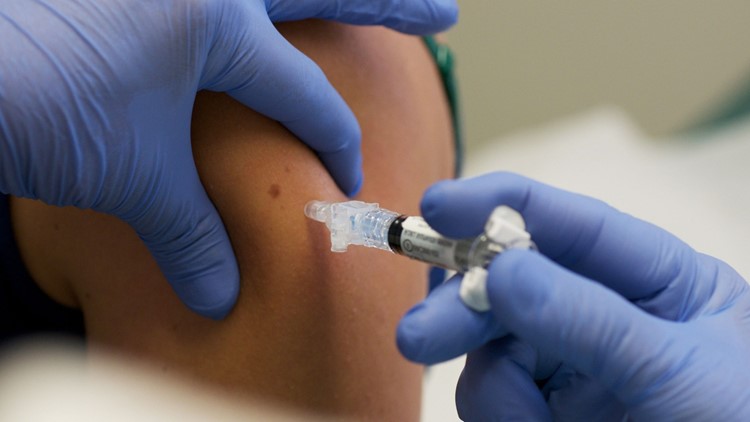CALIFORNIA, USA — When the first U.S. case of swine flu was detected in a child in San Diego County in 2009, Linda Davis-Alldritt — California’s “school nurse consultant” — flew south.
She served as an influenza expert, guiding school officials there. She then helped other school districts and their nurses statewide, coaching them on symptoms, when to send students home and how to prepare for potential school closures.
Davis-Alldritt retired from her position in the state’s Department of Education in 2012, and the department hasn’t had a school nurse consultant since.
Now, in the midst of a pandemic far deadlier than the swine flu, California is one of 10 states, plus the District of Columbia, without a school nurse leader at the state level, according to the National Association of State School Nurse Consultants.
For years, school nurses across the Golden State have advocated without success for the state to again hire a nurse consultant, someone who understands both schools and health care. Part of the previous nurse consultant’s role in California was to help health and education officials at the state and county levels communicate.
As counties seek to reopen schools, some nurses say they are often left without much leadership, even though they play a key role in ensuring that students and staff return to the classroom safely.
Sheri Coburn, past president of the California School Nurses Organization, said she thought the pandemic would create an “a-ha moment” for state officials. New Jersey’s governor, for example, recently signed legislation that would create such a position in that state. In drafting the bill, New Jersey lawmakers cited the prospect of having to rely on school nurses more than ever.
Absent a top state nurse here, school nurses are working closely with local health officers and often look for direction from the California Department of Public Health, Coburn said. But that’s come with some chaos. “You have public health officers resigning because of public pressure, and even at CDPH there’s been considerable turnover,” she said.
A spokesperson for the California Department of Education said that while its health office has no school nurse, it does have a health consultant — an individual with a master’s degree in public health who updates schools on vaccines and other health requirements. The health consultant could be a school nurse — a registered nurse with additional certification to work in a school setting — but it doesn’t have to be, said Cynthia Butler, the department’s spokesperson.
Nevertheless, “the department has maintained its commitment to student health and safety,” Butler said in an email. She added that on multiple occasions during the pandemic, the department has convened county health officers to “streamline communication,” hosted webinars for schools, and consulted a number of health experts to develop the school reopening guidance it released in June.
Coburn, also a school nurse in San Joaquin County, noted that school nurses were not consulted in the drafting of the state guidance, even though questions about the guidance often go to them.
In contrast, school nurse consultants in other states have been very involved in, if not leading the task force on how to bring children back to campuses.
Sharonlee Trefry, the school nurse consultant in Vermont, said part of her role during the pandemic has been to help guide nurses in becoming the “COVID coordinators” at their schools — with all the details and questions that may arise: What happens when a staff member or child tests positive? When can they go back to work or return to school? What if a child sneezes in class?
Sometimes it isn’t as simple as just telling someone to take a look at the Centers for Disease Control and Prevention website, she said.
This year, “school nurses are in a much higher profile, much higher leadership role, they spend an amazing amount of time educating teachers, administrators and families,” about COVID-19, said Trefry, who is also president of the National Association of State School Nurse Consultants. That’s on top of helping to manage chronic diseases over the phone, for instance, or working at flu clinics, she added.
Coburn said that because most schools in California are still doing remote learning, school nurses are also training teachers on how to look for signs of students having an allergic reaction, a seizure or an emotional crisis during Zoom lectures.
A state-level nurse consultant is even more critical for those schools without nurses at all, said Dawn Anderson, a school nurse in Ventura County.
For years, California has had a shortage of school nurses — more than half of school districts in the state don’t have one.
Following state and national guidelines as children return to classrooms takes an “incredible amount of coordination and training,” said Anderson. And because many schools don’t have nurses, that means “school administrators with no health knowledge are then left trying to interpret complicated health recommendations.”
A nurse consultant at the state level also could be a consistent advocate for more funding for school nurses, Anderson and Coburn said.
“Even outside a pandemic, having nurses on campus is essential,” said Dr. Raelene Walker, president of a California chapter of the American Academy of Pediatrics. Children with conditions such as seizure disorders, Type 1 diabetes, severe allergies or asthma, often need a nurse around.
“I have patients who cannot attend school regularly because there is no nurse available in case something happens,” she said.
Anderson said smaller districts with less funding often have a hard time competing with larger or wealthier districts.
“When you look at the cost of getting a school nurse credential on top of a postgraduate degree, nurses may leave to a district that pays more,” Anderson said. “So we have a lot of our rural districts with a lower pay rate that are unable to hire nurses from the field.”
Schools also have to compete against hospitals and other health facilities that can offer registered nurses more attractive pay.
In her email, Butler at the Department of Education, said the state is currently looking to expand the use of Medi-Cal funds for schools, which could help them secure nurses.
Pay scale issues also played into the state’s efforts to replace Davis-Alldritt in 2012, the retired nurse consultant told CalMatters.
When she left, her pay topped out at $98,000, she said. But a school nurse with administrative experience could make up to $20,000 more working as head of school nursing for a large district in the Bay Area or Southern California, she said.
By comparison, in 2019, the state paid a health consultant at the Department of Education $82,000, according to Transparent California.
That’s not the way to attract strong nurse candidates, Davis-Alldritt said. “You’re essentially asking them to do more work for less pay.”



